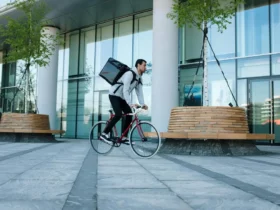Ever wondered when’s the best time to grab your shopping bags and hit the aisles as an Instacart shopper? I’ve been there, scrolling through forums and seeking the sweet spot in schedules to maximize my earnings. Turns out, timing can make a huge difference in how much you can make with Instacart.
Knowing the peak hours and the best days to work can be a game-changer. And let’s be real, who wouldn’t want to shop when it’s less crowded and the batches are just rolling in? Stick around as I dive into the ins and outs of picking the perfect moments to shop and deliver with Instacart.
Mastering Instacart: Strategies for Success
The Impact of Choosing the Right Times
After completing over 1,200 orders, it’s clear to me that timing isn’t just a small piece of the puzzle—it’s a huge chunk of it. Choosing the right times can wildly sway your daily haul. While early mornings (6 AM to 9 AM) and late evenings (6 PM to 10 PM) during the weekdays might sound too early or too late for some, they are nuggets of gold for the Instacart shopper looking to swipe batches with less competition. But beware, these times can offer fewer batches and sometimes lower tips.
The weekends are a whole different ball game. Think of Sunday mornings like the Super Bowl—everyone’s playing, but if you’ve got the game plan, you can score big. Batches tend to have higher tips, and the orders are plentiful. However, be ready to elbow your way through a crowded field. It’s not just about showing up; it’s about strategically positioning yourself to act fast.
Among the seasons, watch out for the January-to-March slump. It might be the signal to peek at other platforms and hedge your bets against slow days. Keeping tabs on local events like concerts or sporting events is also a clever way to anticipate days with a spike in demand.
Key Considerations for Efficient Scheduling
Effectively managing an Instacart schedule doesn’t just happen; it’s crafted. For full-timers, flexibility is your best friend. Rearranging your schedule to sync with Instacart’s peak hours can maximize your take-home pay. If Instacart is your side hustle, anchor your clock-in times over the weekend. With Sunday regularly topping the charts as the busiest day, you’ve got a ready-made strategy for maximizing earnings.
On the Instacart shopper app, there’s this gem called “Best times to shop.” It’s tucked away in the settings, providing estimations of the busiest times day by day. Planning ahead by nearly a week allows me to align my personal to-do’s with prime money-making hours. Besides, Instacart tends to reserve its choicest batches for top-notch shoppers. Having high ratings and being on top of my game gives me a shot at these premium orders, making every minute and hour count.
Running laps between aisles, aiming for the minute saved here and there, has taught me that knowing when to shop is just as critical as knowing how to shop. Efficient scheduling isn’t just about clocking in at random times; it’s a calculated move all the rad shoppers out there have dialed in.
Identifying the Prime Days for Instacart Work
Analyzing Weekday vs. Weekend Dynamics
Monday: Opportunities for a Fresh Start
Mondays might not be everyone’s favorite day, but for Instacart shoppers, it’s an understated goldmine. After a busy weekend, many families need to replenish their fridges for the week ahead. I often find that Mondays have a consistent demand for grocery delivery, making it an ideal day to snag some good batches. It’s all about positioning myself for catch-up orders that could result in solid earnings right out of the gate for the week.
Midweek Insights (Tuesday to Thursday)
The middle of the week presents a varied landscape. Historically, Tuesdays and Wednesdays tend to be slower days for Instacart shoppers, with fewer batches available. But when considering individual strategies, these days may play out differently depending on the area. For me, midweek is a great time to track patterns and anticipate when local stores restock popular items. Some shoppers may overlook these days, but they’re hidden gems if I’m discerning with my batch selections.
Friday’s Weekend Prep Rush
Fridays buzz with a unique energy. Many customers are gearing up for the weekend, whether it’s planning gatherings or just ensuring they’re stocked for personal downtime. I’ve noticed an uptick in larger orders as clients prepare for the weekend ahead. This means being ready to handle more comprehensive lists can be profitable, as long as I’m quick and efficient in fulfilling these batches before the weekend rush.
Weekend Shopping: The Busiest Days
Saturday and Sunday: High Demand Dynamics
Come the weekend, it’s all hands on deck. Saturdays and Sundays are undoubtedly the busiest days of the week for Instacart work. Customers often want to kick back and relax or spend time with their families, leaving the grocery shopping to shoppers like me. These days are prime for earning higher tips and encountering a greater volume of batches. While there’s higher competition from other shoppers, staying alert and maintaining a high shopper rating can secure me more lucrative opportunities.
Determining the Most Profitable Hours
Leveraging Early Mornings
I’ve found that setting my alarm for the crack of dawn can really pay off. Early morning slots, specifically from 6 am to 9 am on weekdays, present a unique opportunity. They’re not as crowded with other shoppers, which means I can grab batches that might otherwise slip away during busier hours. However, there’s a trade-off. Since not everyone is up that early, there tend to be fewer batches, and sometimes, the tips aren’t as high. But here’s a little trick I’ve learned: if I position myself in a store parking lot, I can often catch batches right as they come in, giving me a head start against other shoppers who are still on their way.
Capitalizing on Late Evenings
As the sun sets, another prime timeframe emerges—late evenings, particularly from 6 pm to 10 pm. Many customers are placing orders after work or school, leading to a surge in demand. Despite the added traffic and potential hassle, the effort can be worthwhile as customers often tend to tip better at night. And honestly, the reduced competition from other shoppers who might prefer not to work late is a boon for me.
Afternoon Opportunities
But what about the afternoons? While not traditionally mentioned as the best time to work with Instacart, I don’t overlook the potential of late afternoons and early evenings, from around 4 pm to 9 pm on weekdays.
Many users have noticed surges in orders during this time, which aligns with people getting off work and realizing they need to stock up for dinner. It’s a bit of a balancing act, especially if there are personal tasks to juggle. Yet, tapping into these windows can occasionally yield surprising earnings, and it’s helped me smooth out my income on days that start slow. Adapting to these rhythms, while also considering personal obligations and local shopping habits, has proven essential for maintaining a steady stream of opportunities.
Navigating Through Busy and Peak Pay Periods
Busy Hours vs. Peak Pay: Understanding the Difference
When it comes to working with Instacart, it’s essential to grasp the distinction between busy hours and peak pay. Busy hours are those times when customer demand for deliveries soars, often during midday, early mornings, and weekends. During these periods, there’s a higher chance for more batches, which translates into more opportunities for me to earn. In contrast, peak pay comes into play when Instacart projects a surge in customer demand, prompting an increase in base batch pay, which is separate from tips or promotions.
To leverage peak pay periods, I keep an eye on the peak earning days chart, which indicates the days expected to have higher pay in my area. This handy tool can guide me on when to shop up to a full week in advance. It’s important to note that peak pay is activated from Thursday evening for the following week; tips, on the other hand, are always a 100 percent pass-through to me as the shopper.
Strategies for Maximizing Earnings
If I want to maximize my take-home pay, I’ll need to employ some savvy strategies:
- Schedule Around Peak Earning Days: By checking the peak earning days feature, I can see which days will pay more and plan my week accordingly. Shopping on green days should theoretically boost my earnings higher than shopping on gray days.
- Mix and Match Gigs: I’ve found that relying solely on Instacart isn’t the most effective way to ensure steady income. Instead, I diversify my gig portfolio with apps like DoorDash and Uber Eats. This approach not only maximizes my earning potential but also reduces the downtime between batches.
- Utilize Instant Pay for Immediate Needs: While the weekly payout usually lands in my account by Wednesday, Instacart’s Instant Pay feature enables me to cash out my earnings instantly for a nominal fee, keeping cash flow fresh.
- Stay Informed and Flexible: Information is power! I’m always on the lookout for new features and insights provided by Instacart to stay ahead of the game. Moreover, I tailor my schedule to the local shopping habits and events, staying flexible to capitalize on sudden peaks in demand.
By understanding busy periods versus peak pay times and strategizing accordingly, I’m one step closer to achieving my financial goals through gig work.
Essential Tactics for Instacart Shoppers
The Role of Shopper Ratings
Influence on Batch Availability
I’ve learned that your success in snagging the best batches heavily depends on your shopper rating. Instacart has a grading system where shoppers with a rating of 4.7 out of 5 stars or higher get a head start in seeing available batches. This advantage is crucial, as those precious minutes often mean the difference between claiming a lucrative order and missing out. I strive to maintain top-notch service, ensuring my rating stays high and my access to prime batches remains unfettered.
Effective Shopping Strategies
Handling Multiple Batches
When it comes to maximizing my earnings, I look at handling multiple batches. I’ve got a couple of tricks up my sleeve, such as accepting add-ons and queuing batches efficiently. The key here is to keep the orders organized and plan the best route—this way, I minimize time and maximize payouts.
Efficient Shopping and Customer Interaction
I can’t stress enough how vital it is to shop efficiently and interact effectively with customers. I navigate the store aisles with a clear plan, group items by location, and always keep the customer in the loop, especially if I need to replace items. Through experience, I’ve noticed that impactful communication often leads to better tips and repeat customers.
Financial Management for Shoppers
Decoding Instacart’s Payment System
Understanding Instacart’s payment system took some hustle, but it’s doable. The batch pay includes factors like travel distance, item quantity and weight, and the time anticipated to shop. There can be increases for added items or heavy pay minimum of $2 for those weighty orders. Then there are boosts during high-demand periods. I’ve got a handle on these now, and it helps me decide which batches are worth my time.
Tips for Enhancing Income
Maximizing income isn’t just about taking on batch after batch—it’s about strategizing. I look for batches with higher pay and shorter drives, and I’ve learned that building rapport with customers can result in generous tips. Sometimes, I even work unusual hours, like early mornings or late evenings, to take advantage of less competition.
Tracking Expenses and Mileage
Lastly, I can’t overlook the importance of financial management. I keep detailed records of all my expenses, including gas, vehicle maintenance, and any supplies I buy for the job. And let me tell you, tracking mileage is absolutely non-negotiable—it’s vital for tax deductions. By staying on top of these financial aspects, I ensure that my hard-earned cash isn’t eaten up by overlooked costs.
Tailoring Your Approach to Market Specifics
Understanding Regional Shopping Trends
Getting the most out of Instacart shopping requires a keen understanding of the local market. It’s clear that what works in one region might not fly in another. Take New York City, for example, where bustling professionals prefer early morning deliveries to fit their packed schedules.
Here’s what I keep in mind:
- Demographic dynamics: Higher-income areas often equate to better tips. But don’t let that be your only guide.
- Urban vs. Suburban: City dwellers might prefer speed over everything else. Meanwhile, suburban customers may value communication and accuracy more.
- Target-rich environments like metropolitan areas with high-density living, especially those with limited parking, favor shoppers who are nimble and prepared. Investing in a collapsible wagon can be a game-changer for those large apartment deliveries.
Before committing to any shopping area, I test the waters. I’ll spend a day or two focusing on different neighborhoods to get a feel for the demand and tipping patterns. Monitoring the app for peak times in certain areas has also been instrumental. After all, getting familiar with the rhythm of the market is key.
Seasonal Variations and Their Impact
Let’s talk seasons. Instacart shopping isn’t immune to the ebb and flow of seasonal changes. January through March often feels like a retrenchment period where folks are watching their budget after the holidays.
Here’s a glimpse of how seasons affect shopping trends:
| Season | Impact on Shopping Trends |
|---|---|
| Winter | Increases in orders due to cold weather. Be ready for snowy conditions. |
| Spring | Fluctuates, but watch for events like Easter that might boost orders. |
| Summer | Pay attention to community events that could spike demand. |
| Autumn | Expect an uptick as holidays approach; people start stocking up for festivities. |
And don’t forget the holidays. The period from Halloween to New Year’s Day is like a marathon, with a steady climb in shopping activity. Though, I’ve learned that while major holidays once meant a surge in demand, competition is now making those days less of a windfall than they used to be. Still, on days like Fourth of July, I’ve seen orders pour in as customers prep for their barbecues.
Weather plays a big role too. A rainy day, as inconvenient as it might be, has consistently meant more orders. People prefer staying in, and that’s when an Instacart shopper can really shine. Just remember to drive cautiously.
Seasonal trends extend beyond just the weather. Think of local sporting events or concerts. These gatherings can make certain times exceptionally busy as customers get ready to host friends or simply don’t want to miss any of the action.
I keep track of these patterns, adjusting my schedule accordingly, always aiming to be at the right place at the right time. It’s about staying flexible and riding the wave of each season’s unique offering.
Advanced Instacart Techniques
Utilizing App Features and Promotional Opportunities
Navigating Peak Boosts
When I’m looking at boosting my Instacart earnings, I always keep a sharp eye on any app features and promotional opportunities. Specifically, understanding peak boosts can be a game changer. Here’s how I navigate this nifty feature: Instacart’s app includes a Peak Earnings Days page. Checking this page helps me know which days will pay more, compared to other days in the week. Data resets every Thursday evening, so I’m always ready to adjust my shopping schedule accordingly for the next week. On top of that, this doesn’t affect tips – I still keep 100% of those.
Expanding Your Instacart Skills
Specialized Orders and Certifications
Diversification is key in many fields, and Instacart shopping is no exception. Expanding my repertoire to include specialized orders and pursuing certifications is yet another tactic I explore. Certain orders may require a keen eye for organic foods or an understanding of high-quality cuts of meat. In some cases, there’s the option of becoming certified – for instance, for handling alcohol deliveries – which can open up a new stream of orders. Shoppers with such specializations often stand out and attract customers looking for more tailored services, which can lead to better tips and more consistent work.
Always being on the lookout for tips to boost my performance, I also explore gas rewards, bonus programs, and other incentives that can make a significant difference over time. By employing these strategies and staying informed via the Instacart Shopper app, I’m better positioned to maximize my earnings with each batch.
Evolving as an Instacart Shopper
The Value of Adaptability and Learning
In the ever-changing landscape of gig economy jobs, it’s crucial for me to stay adaptable. I’ve learned that being flexible with my approach can lead to consistent success. As an Instacart shopper, this means constantly upgrading my skills and knowledge to keep up with the game. Whether it’s learning the layout of new stores or adapting to the latest app features, I know my ability to pivot is what keeps me competitive.
I’ve noticed that customers’ needs can vary dramatically. One day, they might prefer a quick delivery without much interaction, while another day, they could value a more personalized service, like checking for the freshest produce. It’s my job to read these cues and adjust my service accordingly. Recognizing and responding to the subtle shifts in consumer preferences shows that I’m not just fulfilling orders—I’m providing an invaluable service.
To really master this craft, I also dedicate time to learning from my experiences, noting which strategies yield the best tips and ratings. For instance, I’ve found that being proactive about out-of-stock items and suggesting alternatives has been particularly appreciated by customers, sometimes even leading to higher tips. It’s about more than just shopping; it’s about being a resourceful and thoughtful problem-solver.
Harnessing Community Knowledge and Insights
I’ve grown to understand that I’m part of a larger community of Instacart shoppers, and there’s a wealth of knowledge to be tapped into. Engaging in shopper forums has been eye-opening; I’ve learned countless tips and tricks that directly improve my efficiency. It’s like we’re all pieces of a larger puzzle, bringing our own experiences and insights to help each other succeed.
The company’s shopper happiness team provides another layer of support. Through their 18-hour-a-day hotline and shopper roundtables, I’ve been able to share my feedback and learn from the combined experiences of my peers. Hearing how other shoppers manage their deliveries and customer interactions has enabled me to refine my approach.
Another valuable resource has been mentorship—both formal and informal. By pairing with veteran shoppers or simply striking up conversations in the grocery store aisles, I’ve picked up a wealth of practical advice. This sense of camaraderie doesn’t just make the job more enjoyable; it makes us all more effective, creating a better experience for customers and a stronger brand for Instacart.
The collective knowledge of the Instacart shopper community is a powerful tool in staying ahead of the curve. As I continue to learn and grow in this role, I’m excited about the potential this knowledge network holds. Whether it’s sharing the latest store layout changes or learning about how to navigate during peak times, leveraging these insights is key to evolving as an Instacart shopper.













